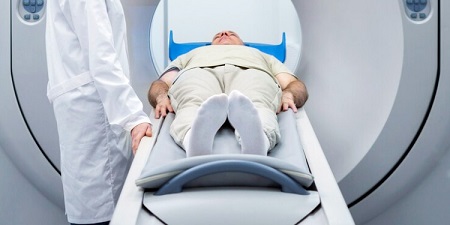Positron emission tomography scan is an imaging technique that uses a special radioactive material known as the tracer to show the body structures and organs in a defined and precise manner. This scan has an edge over the other imaging techniques such as an MRI or a CT scan in the fact that it can detect any lesion such as cancer very early in its stage. PET scan can reveal the biochemical and metabolic functions of the body tissues and organs. PET scan produces 3D images. It can be combined with MRI or CT scan and used as a hybrid technique in certain cases to attain even more detailed pictures.
Table of Contents
Why Is A PET Scan Done?
PET scan is a revolutionary tool that can help appreciate and discover any health related conditions including cancer, heart disease or brain disorders. Some of the indications are mentioned below.
- It can detect any abnormal activity occurring in the body such as in cancer cells and can help detect certain cancer features-
- The detection of cancer foremost
- It can help reveal the spread of the cancer
- It is a great tool in monitoring the effectiveness of the ongoing cancer treatment
- It can check for any recurrent cancer once treated.
- It can help diagnose certain heart conditions and diseases –
- Cause of heart attack
- Coronary artery disease can be diagnosed
- It can be used to guide certain surgical procedures like opening clogged arteries called angioplasty.
- Certain brain disorders symptoms can be diagnosed-
- Alzhimer’s disease
- Cause for a seizure
- To look for the cause of Stroke or TIA (transient ischemic attack)
- Certain brain tumours can be diagnosed
- Factors causing dementia can be diagnosed such as any lesion in the brain matter.
What Are The Precautions And Considerations Before PET Scan?
Your healthcare provider gives a detailed overview of what to do before the scan. There are certain general considerations that you should know-
- You should provide all the relevant medical documents such as-
- The medication you are on
- Previous x-Rays or scans of the same area
- Any known allergy
- Doctors prescription
- You should tell your doctor if you are pregnant or breastfeeding because children and unborn children are more sensitive towards radiation.
- Do not eat anything 4-6 hours before the scan.
- Only drink clear fluids like plain water, or juice without pulp. Before the test.
- Do not drink any caffeinated product for at least 24 hours before the test especially when you have any heart conditions.
- Leave all the accessories and jewellery at home because they are not allowed during the scan.
What Happens During The PET Scan?
- You will be given an IV injection containing a radioactive tracer. FDG (fluorodeoxyglucose) is the most commonly used radiotracer.
- You will be allowed to wait for somewhile while the tracer get absorbed in the body tissue.the tracer gets deposited in the areas where activities more like in cancerous cells
- You will be asked to lay on a scan table once the tracer is absorbed and the scan table will slide into the donut shaped scanner.
- The scanning takes about 30 minutes.
- You need to lie still during the exam so as to produce clear images. Any movement can blur the image thereby reducing the quality of the image and in turn treatment delivery is rendered ineffective or less effective.
- While operating and scanning, the machine produces loud thumping noises. You can ask for headphones or earplugs to cancel the noise.
- Once the scan is done, the scantabel will slide out of the scanner.
Possible Side-effects And Risks Associated With The PET Scan.
The PET scans are conducted under safety guidelines and by trained personnel so as to pose minimum possible risks. There are certain considerations you need to know-
- Radiations- The radioactive tracer remains radioactive for a few hours after the scan. You should not get in close contact with any pregnant lady or children during this period. Although the tracer will get flushed out of the body after a few hours
- Contrast medium- to help hasten the process of contrast getting flushed,, you should drink plenty of water after the scan.
- Allergic reactions- the contrast medium can cause allergic reactions in some people. Symptoms of allergic reactions are-
- Difficulty in breathing
- Redness and rash on skin where the catheter was placed
- Pain and itching
- Lightheadedness or headache
- Feeling nausea or vomiting.
Allergic reactions can be mild to severe. Only severe reactions need rigorous care. But you should tell your doctor as soon as you face the first sign of allergy. Allergies usually start by redness and rash.
- Diseases- if you have certain diseases, your body might respond differently with contrast
- If you are diabetic, you might not absorb the sugar in radioactive tracer, thereby altering the scan report results.
- If you have kidney disease, you might face kidney failure.
It’s always wise to tell your doctor about any disease if you have so as to plan the correct diagnostic method.
To Conclude-
Once our doctor orders a PET scan, the next step is to find the best PET Scan Centre Near You. The definition of best must satisfy reliability in its reports with a low cost PET scan or others. For a better prognosis, it is necessary to diagnose diseases early in their stages. Benjamin Franklin once said “An ounce of prevention is worth a pound of cure”
